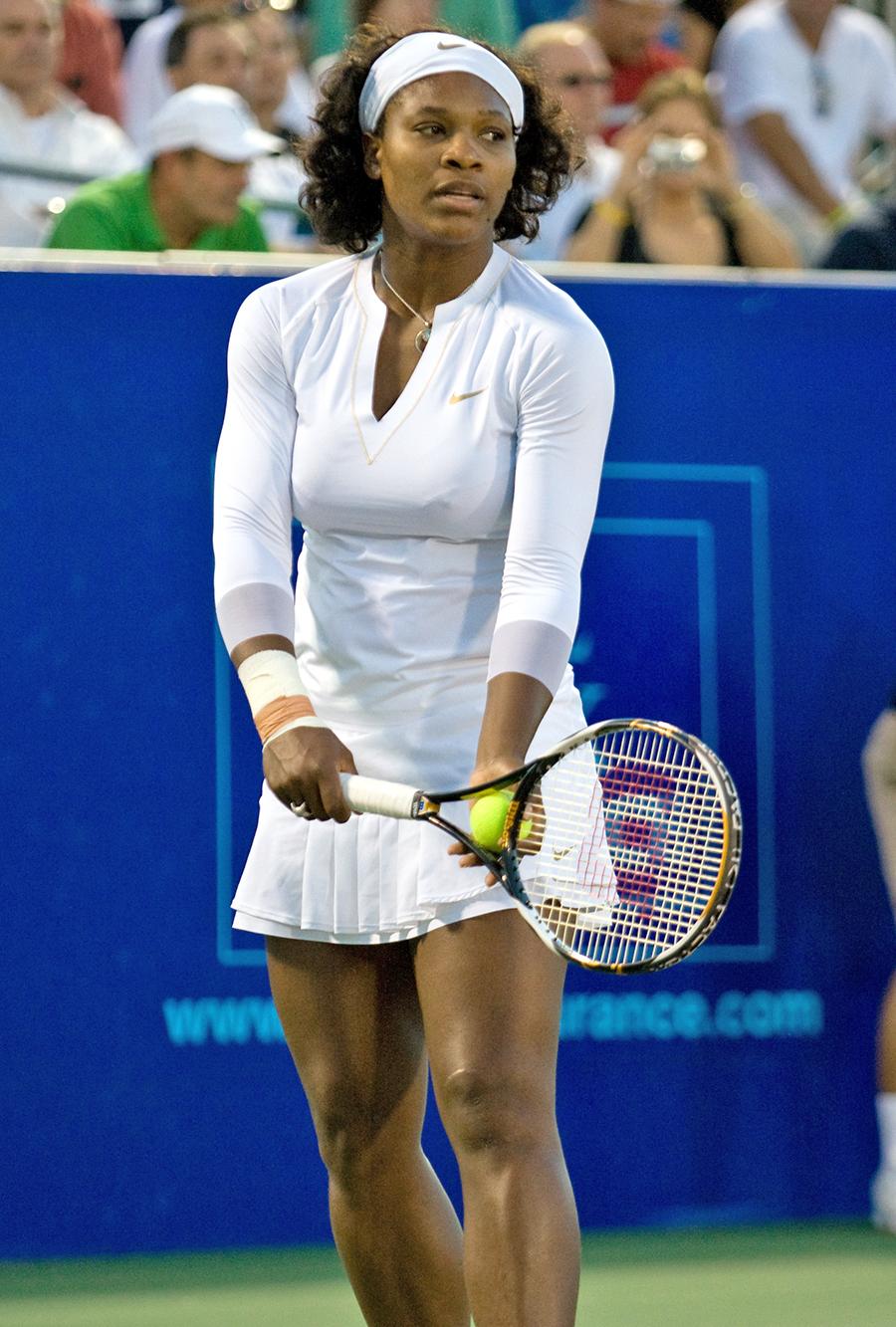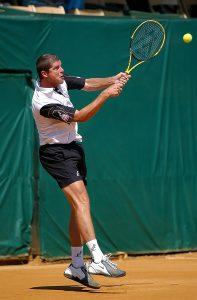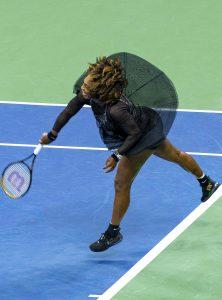We may earn money or products from the companies mentioned in this post.
Brief Overview of Women’s Tennis

Women’s tennis has a rich history and has played a significant role in shaping the sport as we know it today From its humble beginnings to the global phenomenon it has become, women’s tennis has captivated audiences with its fierce competition and remarkable athleticism
History and Development of the Sport
The origins of women’s tennis can be traced back to the 19th century when lawn tennis was introduced It quickly gained popularity among both men and women, with tournaments being organized around the world However, it wasn’t until 1884 that the first official women’s tennis tournament was held in London
Over time, women’s tennis evolved, with new rules and regulations being implemented to ensure fair play The introduction of professional circuits like the Women’s Tennis Association (WTA) in 1973 provided female players with more opportunities to showcase their skills on a global stage
Role of Female Players in Shaping Tennis History
Female players have made an indelible mark on tennis history through their exceptional achievements and groundbreaking contributions Icons such as Billie Jean King, Martina Navratilova, Serena Williams, and Steffi Graf have not only dominated the sport but also shattered barriers along the way
These trailblazing women have fought for gender equality in prize money, challenged societal norms, and inspired generations of female athletes Their dedication to excellence and determination to level the playing field have left an enduring legacy within the world of tennis
Comparison with Men’s Tennis Matches

While both men’s and women’s tennis share many similarities, there are notable differences between matches played by male players versus those played by female players
Differences in Match Duration
One of the key differences lies in the duration of matches On average, men’s tennis matches tend to be longer than women’s matches This can be attributed to factors such as differences in physical strength and playing styles
The power game often seen in men’s tennis, characterized by strong serves and powerful groundstrokes, can lead to longer rallies and more prolonged matches In contrast, women’s tennis often features a more varied style of play, with a greater emphasis on agility and strategic shot placement
Observations Regarding Match Length
When it comes to match length, it is important to note that there are exceptions to every rule While men’s matches generally have a reputation for being longer, there have been instances where women’s matches have exceeded expectations in terms of duration
Ultimately, the length of a tennis match is influenced by various factors such as player skill level, game tactics, court surface, and even weather conditions Each match has its own unique rhythm and flow that keeps fans on their toes and adds to the excitement of the sport
Factors contributing to shorter women’s tennis matches

In the world of tennis, there are various factors that contribute to the duration of a match When it comes to women’s tennis, certain factors come into play that often result in shorter matches compared to their male counterparts Let’s delve into these factors and explore why women’s tennis matches tend to be shorter
Match format differences between men’s and women’s tennis
One significant factor that affects the length of women’s tennis matches is the difference in match formats between men and women In most tournaments, men play best-of-five sets, while women compete in best-of-three sets This distinction alone has a substantial impact on overall match length
Grand Slam differences for men and women
An interesting point to note is that even within the same tournament, such as Grand Slams, there are disparities in match format between men and women While men continue with their best-of-five set structure throughout all rounds, except for some recent changes in the US Open final set tiebreak rule; women maintain their best-of-three set format from start to finish
Impact on overall match length
The contrast in set structures naturally leads to different durations for men’s and women’s matches With fewer sets required for victory, female players can complete their matches more swiftly than their male counterparts This variance contributes significantly to the shorter duration of women’s tennis matches
Physiological factors affecting female players’ endurance and performance
Beyond match formats, physiological factors also play a role in determining the duration of women’s tennis matches There are inherent disparities in muscle mass, strength, and stamina between male and female athletes
Muscle mass, strength, and stamina disparities between male and female athletes
Male athletes generally possess greater muscle mass, strength, and stamina compared to their female counterparts This difference in physical attributes can impact various aspects of the game, including serving speed and power during rallies The ability to generate force on the court affects the pace of play and can contribute to shorter matches in women’s tennis
Recovery time between points or games
The recovery time between points or games is another aspect influenced by physiological differences Female players may require slightly more time to recover due to their physical makeup This additional recovery time contributes to a natural tempo that often leads to shorter matches
Hormonal influences on fatigue resistance, muscle recovery, and injury risk
Besides anatomical disparities, hormonal influences also come into play when considering match duration in women’s tennis
Impact on fatigue resistance, muscle recovery, and injury risk
Hormonal factors can affect fatigue resistance, muscle recovery, and injury risk in female athletes These influences may impact the intensity of play and endurance levels during a match Consequently, matches may conclude sooner due to potential limitations imposed by hormonal variations among female players
Perceptions and misconceptions about shorter women’s tennis matches

When it comes to women’s tennis, there has been criticism surrounding the quality of play due to the shorter match durations compared to men’s matches However, it is essential to address these misconceptions and recognize the competitiveness and entertainment value that both men’s and women’s games offer
In top-level women’s tennis, skill, strategy, mental fortitude, and physical conditioning are paramount Players like Serena Williams, Naomi Osaka, and Ashleigh Barty consistently demonstrate their prowess on the court through their precise shots, tactical brilliance, unwavering focus, and incredible athleticism These factors contribute to the intensity of matches and should not be overlooked when evaluating the quality of play
The importance of skill, strategy, mental fortitude & physical conditioning among top female players
For any athlete competing at an elite level in tennis or any sport for that matter, skill is a prerequisite The ability to execute powerful serves, accurate groundstrokes, delicate volleys requires years of practice and honing one’s technique Moreover, effective strategy plays a significant role in determining success on the court Top female players analyze their opponents’ weaknesses and adapt their game plans accordingly in order to outmaneuver them
Mental fortitude is another crucial aspect that cannot be undermined The pressure-packed moments during critical points or facing match point require immense mental strength to stay focused and make sound decisions under duress Female players have consistently shown their resilience in challenging situations
Physical conditioning is often an underrated factor when it comes to assessing the quality of play in women’s tennis Professional female athletes go through rigorous training regimes that help improve their agility, speed, endurance levels – all vital components for excelling on court
Challenging stereotypes about “endurance” as an indicator of ability & worthiness

One prevalent stereotype in sports, including tennis, is the belief that endurance is a defining factor in determining ability and worthiness This misconception often leads to unequal comparisons between men’s and women’s games, with the former being perceived as more physically demanding due to longer match durations
Reframing the narrative around gender-based comparisons in sports
It is important to reframe the discussion around gender-based comparisons in sports and recognize that different factors contribute to the overall quality of play Rather than focusing solely on match duration, we should consider factors such as skill level, strategy, mental toughness, and athleticism when evaluating athletes’ abilities
Discussion on how societal expectations have influenced perception
Societal expectations and biases have played a significant role in shaping perceptions of women’s tennis matches There has been a historical tendency to downplay women’s achievements and athleticism compared to their male counterparts By challenging these stereotypes and acknowledging the immense talent and dedication displayed by female tennis players, we can appreciate the sport for what it truly is – a showcase of skill, strategy, mental fortitude, and physical prowess regardless of match duration
Benefits & Potential Drawbacks of Keeping Women’s Tennis Matches Shorter

Positive Outcomes from Shorter Matches
Shortening women’s tennis matches can have several benefits, one of which is increased accessibility for diverse audiences By reducing the duration of matches, families with young children, for example, would find it easier to attend and enjoy the sport This could have a positive impact on viewership numbers and TV ratings over time, ultimately helping to grow the sport and attract new fans
In addition to accessibility, shorter matches also offer manageable schedules for players and tournament organizers By reducing the length of games, female athletes face a lower risk of overexertion, fatigue-induced injuries, or burnout This promotes their overall well-being while ensuring efficient use of court time and resources during major events
Considering Possible Changes to Match Format
As discussions continue around match formats in women’s tennis, one potential change being explored is extending matches to best-of-five sets, similar to men’s games Doing so may have several benefits worth evaluating Firstly, it could enhance competitiveness and entertainment value by allowing players more opportunities to showcase their skills
However, when considering such changes, fairness must be evaluated in relation to men’s games and prize money distribution It is important to ensure that any modifications do not inadvertently create disparities or perpetuate gender inequalities within the sport
Additionally, concerns about increased injury risk and player burnout need to be addressed when contemplating changes in match formats It is crucial for governing bodies to consider alternative solutions that equalize match lengths without compromising the well-being of female athletes Ongoing dialogue between players, coaches, and governing bodies plays a vital role in finding effective solutions that cater to everyone involved in women’s tennis
Useful Links

Is women’s tennis the only sport which is shorter than men?
Wimbledon 2017: Is it sexist women only play three sets at …
2022 Women’s Tennis Schedule
No, women shouldn’t have to play five sets to get equal …
Why women and men should play an equal number of sets …
Why don’t women play best out 5 sets in tennis?
Shortest tennis match records
Timeline of Women in Sports
Match length – Heavy Topspin
How long are tennis matches? – Dan’s Advantage
Men versus Women Tennis Matches
(PDF) Rally pace and match characteristics of male …
10+ Longest Tennis Matches Ever | Men’s & Women’s
Men’s vs Women’s Tennis: What Are The Differences?
Don’t blame market forces for female tennis stars being …
How Long Do Tennis Matches Last? [2023] –
Looking for Equality in Tennis? Check the Stat Sheet
Why don’t grand slams introduce best of five sets matches …
Women use faster balls than men at U.S. Open. Some …






